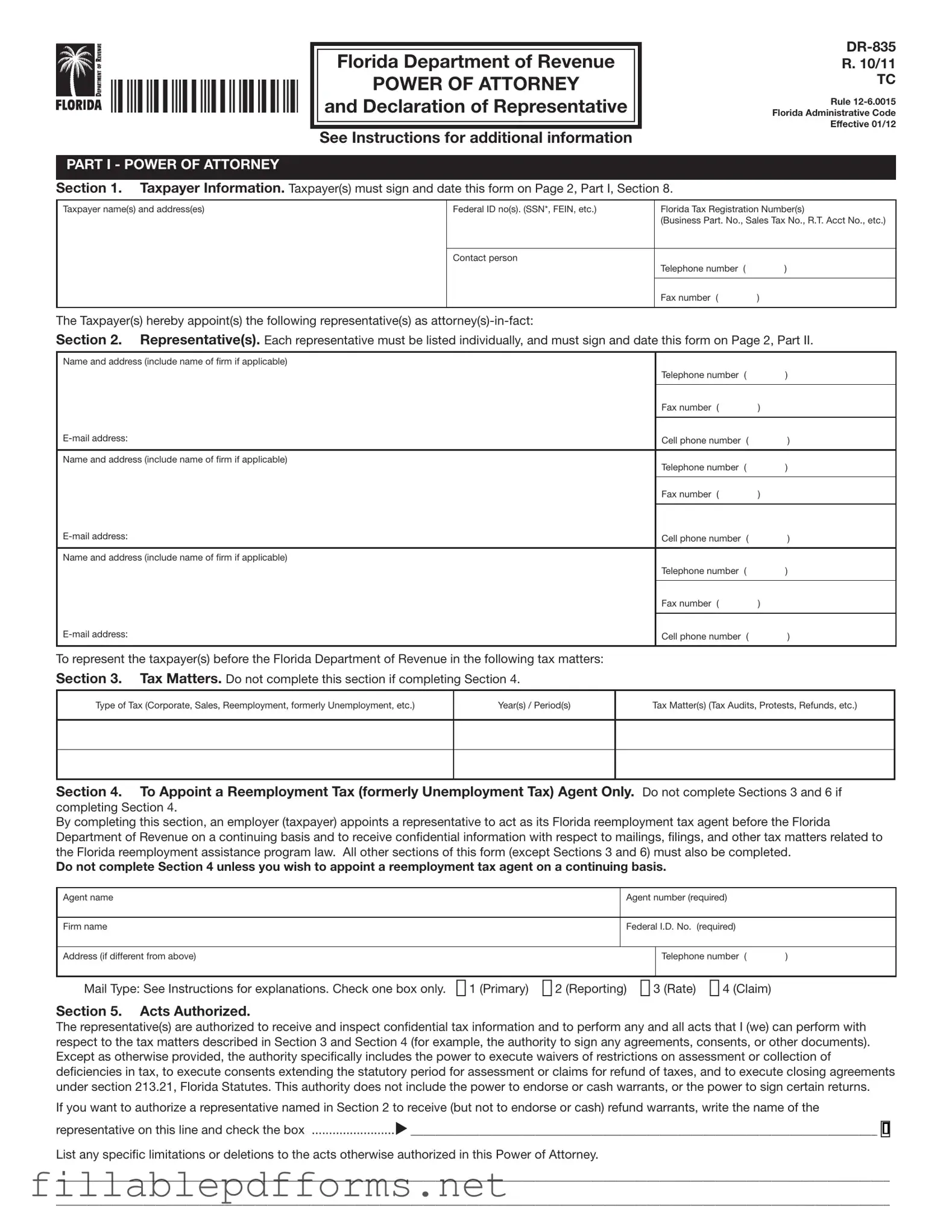The Tax POA DR 835 form serves as a crucial document for individuals and businesses seeking to authorize a representative to act on their behalf in tax matters. This form is essential for ensuring that the appointed representative can communicate with tax authorities, receive confidential information, and make decisions regarding tax filings and payments. By completing the Tax POA DR 835, taxpayers can ensure that their interests are effectively represented without direct involvement in every interaction with tax agencies. The form requires specific information, including the taxpayer's details, the representative's information, and the scope of authority granted. It is important to understand the implications of granting power of attorney, as it allows the representative to handle sensitive financial matters. Additionally, the form must be signed and dated by the taxpayer to be valid, ensuring that the authorization is both intentional and documented. Understanding the significance and requirements of the Tax POA DR 835 form is essential for anyone looking to streamline their tax processes and maintain compliance with tax regulations.
